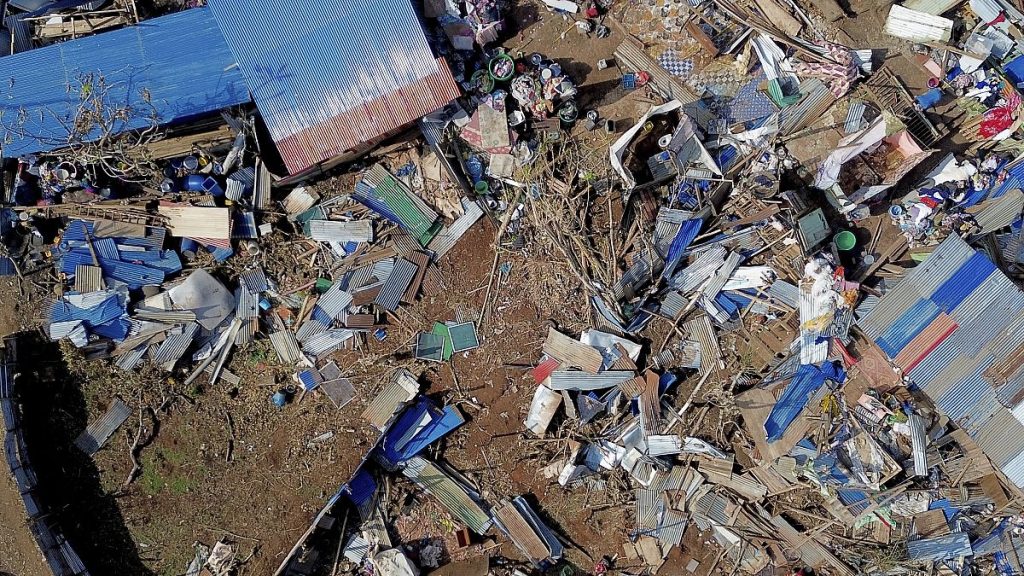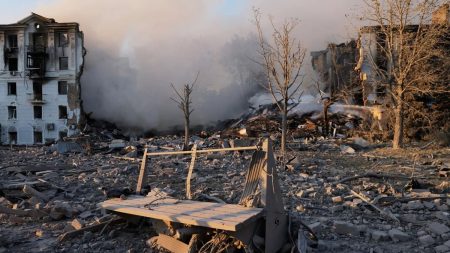Mayotte, a French archipelago nestled in the Indian Ocean and considered France’s poorest department, braced itself for the onslaught of Tropical Storm Dikeledi just weeks after the devastating impact of Cyclone Chido. The island territory issued a red alert, urging residents to seek secure shelter, stockpile essential supplies, and remain indoors as Dikeledi unleashed torrential rains and powerful winds. This second tropical storm arrived as Mayotte was still grappling with the aftermath of Cyclone Chido, a catastrophic event that claimed at least 39 lives, injured over 5,000, and left 200 individuals missing. The island’s infrastructure lay in ruins, and the recovery process was in its nascent stages when Dikeledi struck.
Dikeledi, initially a cyclone, weakened to a tropical storm before reaching Mayotte. While its center passed approximately 100 kilometers south of the island, sparing it a direct hit like Chido, the threat remained substantial. Météo-France, the French meteorological service, cautioned that Dikeledi could regain cyclone strength, and Mayotte authorities warned of a heightened risk of flooding and landslides, maintaining the red alert and enforcing a strict curfew. Cyclone shelters were reopened in schools and community centers to accommodate those displaced or seeking refuge. The international airport, already severely damaged by Chido, was closed indefinitely.
The impact of Cyclone Chido had exposed the vulnerability of Mayotte’s infrastructure and the precarious living conditions of many residents. The storm had decimated homes and left countless individuals without adequate shelter. When Dikeledi hit, many were still struggling to rebuild their lives. The village of Mbouini, largely spared by Chido, was inundated and devastated by Dikeledi, forcing residents to flee in canoes as floodwaters submerged their homes. This successive blow further exacerbated the already dire situation in Mayotte.
The French government mobilized emergency personnel and security forces to address the impending crisis, focusing particularly on the vulnerable shantytowns surrounding Mamoudzou, the capital. The devastating impact of Chido had sparked outrage among residents, who expressed their frustration with the perceived neglect by the French government. Mayotte, the poorest territory in the European Union, has long felt marginalized and overlooked by mainland France. The arrival of Dikeledi intensified existing tensions and underscored the urgent need for comprehensive aid and support.
Before reaching Mayotte, Dikeledi wreaked havoc in nearby Madagascar, making landfall as a cyclone and resulting in three fatalities. Parts of northern Madagascar were also placed under red alert. The southwestern Indian Ocean, including Mayotte, experiences a cyclone season from November to April and has been increasingly impacted by powerful storms in recent years. The region is still recovering from the devastating effects of Cyclone Idai in 2019, which caused widespread destruction and loss of life across multiple countries.
The successive blows of Chido and Dikeledi have left Mayotte facing a monumental challenge. The island’s infrastructure has been crippled, its residents displaced, and its future uncertain. The scale of the devastation necessitates a coordinated and sustained effort to rebuild homes, restore essential services, and provide psychological support to the traumatized population. Furthermore, it highlights the urgent need for long-term solutions to address the underlying issues of poverty, inadequate housing, and environmental vulnerability that exacerbate the impact of natural disasters in this fragile island community. The international community must also step up to provide the necessary resources and expertise to support Mayotte’s recovery and help build resilience against future climate-related events.














